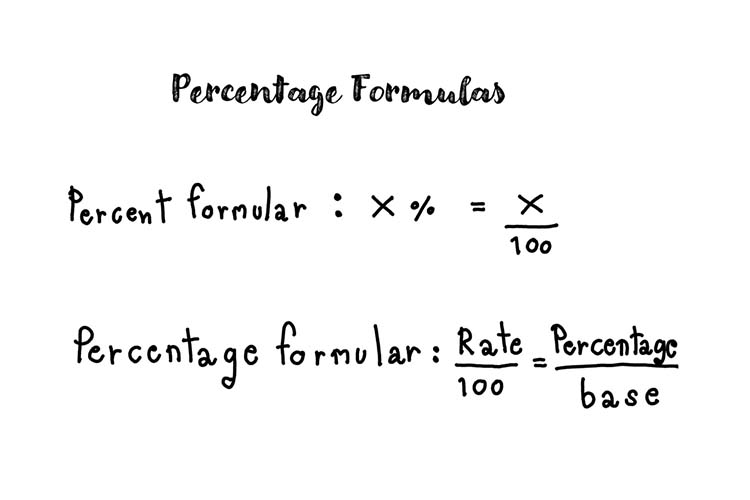

Sometimes while doing different science experiments and mathematics calculations, one tends to make a lot of mistakes or as one calls it in mathematical terms ‘errors.” In this article, we will talk about different errors that one can face during some calculations and/or experiments; absolute error, relative error, and mainly percentage error. First, we are going to talk about absolute error:
Related post: https://www.mytutorsource.hk/blog/why-do-so-many-students-find-mathematics-difficult/
Absolute error is the difference between the estimated value and the exact value. It can be the difference of approximated value and the known value. As, approximated or estimated value is the one that you estimated and the known value is the one that came out to be the exact value. The difference can come out as negative however due to the absolute signs it always will come out as a positive value. Moreover, most importantly, it is the first step in finding the percentage error. It is denoted by |a|.
Absolute Error = |Estimated value ― Exact value|
Consider you are the head of Human Resource (HR) department at a firm and your intern tells you that there will be six (6) candidates to interview. However, ten (10) candidates show up for the interview. Now, if you have to calculate the absolute error you will apply the formula. For instance,
Absolute Error = |Estimated value ― Exact value|
= |6 ― 10|
= |-4|
= 4
By applying this formula, you will have the answer to what was the absolute error in your calculations. In this case, the absolute error came out Four (4) because of how the estimated value / number that was informed to you was six (6); only six candidates were supposed to come however, due to the error, ten (10) candidates ended up coming at the interview.
Relative error is dividing the absolute error by the exact value of the given data. In layman’s terms, relative error is the difference of estimated and exact value later divided by the exact value. Here, estimated value is also known as approximated value and exact value to be known value. It is crucial and the second step in finding the percentage error. First, when we take the difference between the estimated value and exact value then we have to divide it by the exact value.
Relative Error = (Estimated value ㅡ Exact value)/Exact value
Consider you host a party for your office members at your place. According to your estimation, only 60 people were coming to your place and you actually prepared everything accordingly. Everything went downhill when you actually counted that there were 120 people. Now, what is the relative error? one might ask. First and foremost, you should calculate the difference between estimated value and exact value, which is also “Absolute error”. Then you have to divide the absolute error by the exact value or the value that you came to know; known value. For instance in this case:
Relative Error =(Estimated value ㅡ Exact value)/Exact value
= 60 ㅡ 120/120
= -60/120
= 60/120
= 1/2
= 0.5
After applying this formula, you can actually calculate the relative error, which is 0.5 in this case. Therefore, in order to find relative error you do have to find absolute error first or simultaneously.
Percentage Error is the difference of exact value and approximated value that is divided by the exact value and multiplied by 100%. It gives out the precise percentage error for the given data. If the percentage error is close to zero then the estimated value from your given data is almost as your exact value. Overall, percentage error for a lot of experiments is represented as a non-negative number. However, for some chemical projects, it is compulsory to present it as a negative number because a positive value in chemistry would indicate a potential fault with the experiment and the chemical reactions if precautionary measures were not taken.
Percentage Error = (Estimated value ㅡ Exact value)/Exact value×100
For instance, in previous examples, we were just calculating the absolute and relative error. We can calculate their percentage error as well.
Percentage Error = (Estimated value ㅡ Exact value)/Exact value ×100
= 60 ㅡ 120/120×100
= -60/120×100
= 60/120×100
=1/2×100
= 50
Percentage Error = 50%
From this, one can say that the percentage error with the estimated value is 50%.
Another example can be, in your physics lab, a rectangular block was provided to you. You were given the dimensions of the block and its displacement in a container of a known volume of water. Your estimated density of the block comes out as 3.57 g/cm3. You look up the density of the block at room temperature and find it to be 4.80 g/cm3. What is the percentage error to the given data?
Percentage Error =(Estimated value ㅡ Exact value)/Exact value ×100
= 3.57 ㅡ 4.80/4.80×100
= -1.234.80×100
= 1.23/4.80×100
= 0.25625×100
= 25.625
Percentage Error = 25.63%
In a nutshell, you cannot calculate percentage error without knowing about the absolute error and relative error. The importance of percentage error is even prevalent in our daily chores. These errors are mostly due to incorrect data and sometimes due to human error (estimating wrong values, overseeing the right data). Now, you will be able to calculate the percentage error on your own but do not forget to practice!!